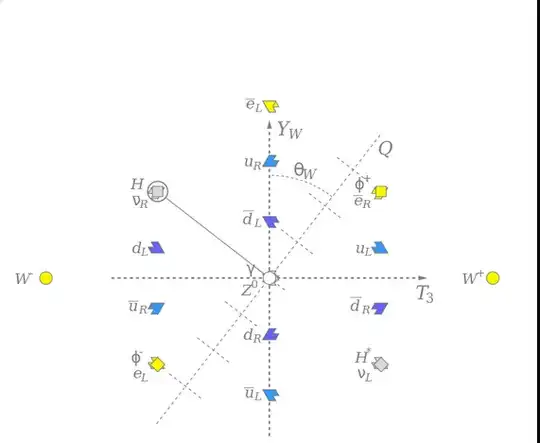Answer from an experimental physicist:
One has to keep in mind that the theory of physics has evolved within the universe and at the time we find ourselves in. This means that first there were observations and measurements, and then laboriously and slowly mathematical models evolved to fit the observations and measurements and, very important, to predict new observations and measurements.
One has to note that the photon was experimentally determined from measurements to be a particle of zero mass involved in electromagnetic interactions.
It helps to look at the history, of how three gauge bosons and a photon were proposed for an SU(2)xU(1) symmetry:
In 1964, Salam and Weinberg had the same idea, but predicted a massless photon and three massive gauge bosons with a manually broken symmetry. Later around 1967, while investigating spontaneous symmetry breaking, Weinberg found a set of symmetries predicting a massless, neutral gauge boson. Initially rejecting such a particle as useless, he later realized his symmetries produced the electroweak force, and he proceeded to predict rough masses for the W and Z bosons. Significantly, he suggested this new theory was renormalizable.
italics mine.
So the existence of a photon is in no doubt.
Identifying the photon with one of the four unbroken gauge bosons is not possible, as before symmetry breaking charge is a composite of weak hyperharge and weak isospin as defined when all gauge bosons are of mass zero.
The above spontaneous symmetry breaking makes the W3 and B bosons coalesce into two different physical bosons with different masses – the Z0 boson, and the photon (γ),

where $θ_W$ is the weak mixing angle.
Here is how charge is identified after symmetry breaking

The pattern of weak isospin, $T_3$, and weak hypercharge, $Y_W$, of the known elementary particles, showing the electric charge, Q, along the weak mixing angle. The neutral Higgs field (circled) breaks the electroweak symmetry and interacts with other particles to give them mass. Three components of the Higgs field become part of the massive W and Z bosons.
So even though zero mass gauge bosons exist before symmetry breaking it is not possible to identify one of them to the photon. It is combination according to the matrix above that ends up into being the experimentally observed photon.
As experiments at the LHC are nearing energies where the primordial quark gluon plasma can be studied, maybe in future higher energy colliders there will be some experimental evidence in the distributions of the change before and after symmetry breaking.

